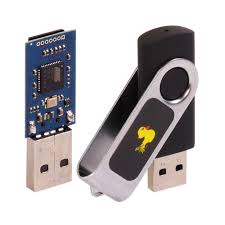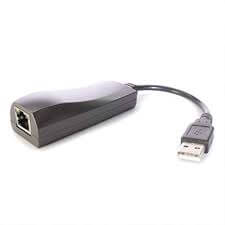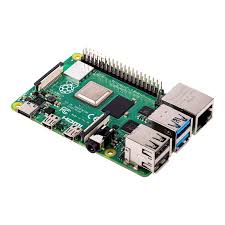In the world of cybersecurity, ethical hacking has become an indispensable practice. Ethical hackers, also known as white-hat hackers, use advanced tools and techniques to identify vulnerabilities before malicious actors can exploit them. Among these tools, specialized gadgets play a critical role. Here, we explore seven top hacking gadgets that every ethical hacker should know about.
Table of Contents
Ethical Hacking Tools: A Quick Overview
Ethical hacking tools are specialized software, devices, or platforms used by ethical hackers (also known as white-hat hackers) to identify and address vulnerabilities in computer systems, networks, or applications. These tools help simulate cyberattacks, uncover security flaws, and improve an organization’s overall security posture.
1. WiFi Pineapple

The WiFi Pineapple is a must-have for anyone diving into wireless network security. Designed by Hak5, this powerful device simplifies the process of identifying vulnerabilities in Wi-Fi networks.
Key Features:
Rogue access point capabilities.
Man-in-the-Middle (MitM) attack simulation.
Automated Wi-Fi network auditing.
How It Works: The WiFi Pineapple tricks devices into connecting to a fake Wi-Fi network, allowing ethical hackers to monitor traffic and identify security flaws.
Use Case: Testing the security of public or corporate Wi-Fi networks.
2. USB Rubber Ducky

The USB Rubber Ducky is a tool that revolutionizes keystroke injection attacks. It looks like a standard USB drive but functions as a keyboard to deliver pre-programmed payloads.
Key Features:
Rapid script execution.
Compatible with Windows, macOS, and Linux.
Extensive payload library.
How It Works: Once plugged into a target device, the Rubber Ducky executes scripts at lightning speed, automating tasks like password extraction and data exfiltration.
Use Case: Demonstrating the dangers of leaving USB ports unprotected.
3. LAN Turtle

The LAN Turtle is another creation by Hak5, designed for stealthy network penetration testing.
Key Features:
Stealthy backdoor access.
Network traffic monitoring.
Remote command and control.
How It Works: This device connects to a network via Ethernet, allowing ethical hackers to assess vulnerabilities and simulate insider threats.
Use Case: Corporate network audits and penetration testing.
4. Proxmark3

The Proxmark3 is a versatile gadget for RFID and NFC security testing. It’s widely used by security professionals to assess the vulnerabilities of access control systems.
Key Features:
Reads and clones RFID/NFC cards.
Supports high- and low-frequency systems.
Open-source firmware for customization.
How It Works: The device interacts with RFID cards, enabling users to test for cloning and emulation vulnerabilities.
Use Case: Evaluating the security of building access systems and smart cards.
5. Hak5 Key Croc

The Key Croc is a covert keylogger and payload delivery tool that blends functionality with stealth.
Key Features:
Logs keystrokes silently.
Executes payloads upon detecting specific keywords.
Offline and online operation modes.
How It Works: The Key Croc looks like a standard USB cable but functions as a powerful penetration testing device.
Use Case: Highlighting risks associated with physical access to devices.
6. Flipper Zero

Dubbed the “Swiss Army Knife” of hacking tools, the Flipper Zero is a multi-functional device that excels in wireless communication testing.
Key Features:
Works with RFID, NFC, and infrared signals.
Tests RF protocols like garage doors and key fobs.
Open-source design for customization.
How It Works: The Flipper Zero can emulate, clone, and analyze various communication protocols, making it invaluable for IoT security assessments.
Use Case: Testing the security of IoT devices and wireless networks.
7. Raspberry Pi with Hacking Kits

A Raspberry Pi equipped with hacking tools is one of the most versatile and affordable gadgets for penetration testing.
Key Features:
Supports operating systems like Kali Linux.
Compact and portable.
Compatible with a wide range of hacking tools.
How It Works: Ethical hackers use Raspberry Pi devices to run security tools, simulate attacks, and test defenses on the go.
Use Case: Mobile penetration testing and cybersecurity training.
Conclusion
The world of ethical hacking is ever-evolving, and these seven gadgets highlight the cutting-edge technology that empowers cybersecurity professionals. From testing Wi-Fi networks to assessing RFID systems, these tools are indispensable for identifying and mitigating security risks. However, it’s crucial to use these devices responsibly, adhering to ethical guidelines and obtaining necessary permissions.
By integrating these tools into their toolkit, ethical hackers can stay ahead of the curve and help organizations bolster their cybersecurity defenses.
Why Businesses Trust SecureMyOrg for Comprehensive Network Security
At SecureMyOrg, we uncover and fix all possible security vulnerabilities of mobile and web, while providing solutions to mitigate risks. We are trusted by renowned companies like Yahoo, Gojek and Rippling, and with 100% client satisfaction, you’re in safe hands!







Some of the things people reach out to us for –
- Building their cybersecurity program from scratch – setting up cloud security using cost-effective tools, SIEM for alert monitoring, building policies for the company
- Vulnerability Assessment and Penetration Testing ( VAPT ) – We have certified professionals, with certifications like OSCP, CREST – CPSA & CRT, CKA and CKS
- DevSecOps consulting
- Red Teaming activity
- Regular security audits, before product release
- Full time security engineers.
Relevant Posts

What Is Penetration Testing as a Service?
Penetration testing as a service (PTaaS) lets experts simulate real attacks to uncover vulnerabilities before hackers do. This guide explains the process, benefits, and costs, helping businesses strengthen defenses with predictable, ongoing security checks.

How To Inspect Encrypted Traffic Without Breaking Privacy
Network administrators face a challenge: securing systems while respecting privacy. This guide explains how to inspect encrypted traffic without breaking privacy using metadata, anomaly detection, and machine learning ensuring visibility, compliance, and trust.

How to Audit Infrastructure as Code (IaC) for Security Vulnerabilities
Discover how to audit Infrastructure as Code (IaC) for security vulnerabilities with this practical guide. Learn to scan IaC files using tools like Checkov, fix issues like exposed resources, and integrate audits into CI/CD pipelines. Protect your cloud systems from misconfigurations and ensure compliance with clear, actionable steps.

DevSecOps Best Practices: Integrating Security Early in Your CI/CD Pipeline
This article provides a practical guide to embedding security into every stage of your CI/CD pipeline. Learn core DevSecOps best practices like SAST, DAST, dependency scanning, secrets management, and compliance automation to catch vulnerabilities early, foster a culture of shared ownership, and build a secure-by-design development process that accelerates release cycles.

5 Cloud Misconfigurations That Lead to Data Breaches
Cloud misconfigurations are one of the leading causes of data breaches, yet they’re also among the most preventable. From exposed storage buckets to weak IAM policies, attackers exploit these mistakes daily. Learn about the top 5 misconfigurations and how your organization can fix them before they lead to costly data exposure.

How Can Ethical Hacking Training Elevate Your Internal Cybersecurity?
Ethical hacking training empowers organizations to strengthen internal cybersecurity by uncovering vulnerabilities before attackers do. From mastering penetration testing to enhancing incident response, this training builds a proactive security culture. Learn how Secure My ORG’s programs can elevate your team’s skills and fortify defenses against modern threats like AI-driven attacks.
